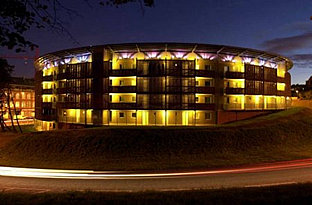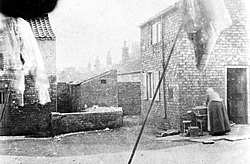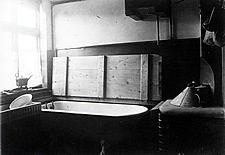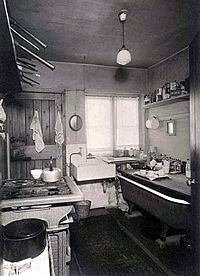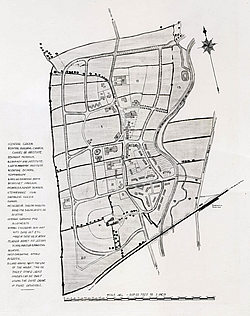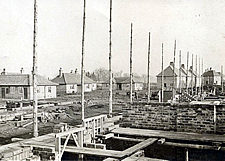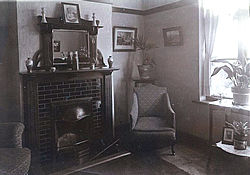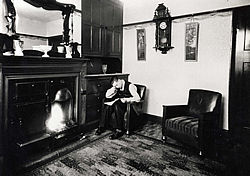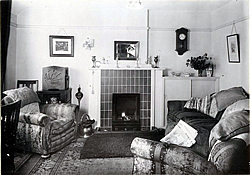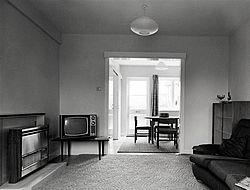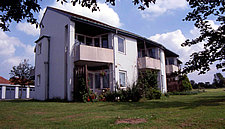In 1902, Joseph Rowntree acquires 150 acres of land north of York. Building work starts on New Earswick. One hundred years later, there are 1,000 homes in New Earswick and the Joseph Rowntree Housing Trust also manages another 1,000 homes. The Joseph Rowntree Foundation has one of the largest programmes of research into housing in the country.
How have our homes changed? And what about the ways in which we pay for them?
How have our homes changed?
In 1901, Joseph Rowntree’s son Seebohm publishes a study of the living conditions of the working classes in York. This reveals appalling statistics of dark, overcrowded and unsanitary housing. The 1901 Census confirms this picture: 8 per cent of the population of England and Wales live in overcrowded homes. Many working-class houses do not have their own piped water supply. Few have bathrooms or hot water geysers.
Impressed by the ideas of Ebenezer Howard, Joseph Rowntree appoints Raymond Unwin and Barry Parker as masterplanners for a ‘garden village’. Building work begins at New Earswick in 1902.
The planning layout is innovative. Most houses have three bedrooms, a living-room, parlour, kitchen, larder and coal-house. The main living-room faces south, to get the most sunlight. Each house has a garden with fruit trees. All but the very cheapest have running water. The most expensive have bathrooms; others have a bath in the kitchen with a hinged top to use as a table. There is a coal-fired range in each kitchen.
Unwin and Parker go on to plan the garden cities of Letchworth and Welwyn. Through Raymond Unwin’s work for the government, the ideas on design and layout first put into practice in New Earswick spread throughout the country.
By 1939, there are 518 houses in New Earswick, with some local shops. But after the war, it becomes clear that the population is changing and more varied types of home are needed. Twelve bungalows for older people mark the first of the JRHT’s care services. By 1954, the trust is also building for single working people, opening the ‘Swedish flats’ in 1960.
While modernisation and building work continue, the Foundation starts to research housing design beyond New Earswick. In the 1960s, Pearl Jephcott examines the social implications of high-rise living. In the 1980s, Alice Coleman explores the influence of estate design on vandalism. In the 1990s, work by Valerie Karn and Linda Sheridan on the design of new homes produces guidelines for tenants and buyers on what to look for when choosing a home.
In 1991 the Foundation brings together a group of housing experts to develop the concept of Lifetime Homes – designed to meet the needs of most households, even if these change over time. The first estate built entirely to Lifetime Homes standards opens at Woodlands in York in 1994.
And changes in technology are also influencing home design. Whilst only 2 per cent of houses are connected to mains electricity in 1910, in 1998 the JRF opens two Smart homes. These demonstrate that technology is sufficiently advanced to enhance the lifestyle of everyone, from the busy executive to the frail older person.
How do we pay?
By the end of 1918, only about 10 per cent of housing is owner-occupied. Private charities or local authorities are providing little low-cost housing, although bodies like the Peabody Trust are building flats to rent out cheaply. By 2001, around two-thirds of the population either own their home outright or have a mortgage. Just over one-fifth live in social housing.
The Foundation’s first grant to a housing body is to the National Housing Reform Council in 1910. In 1935 it is a founder member of the National Federation of Housing Societies – now the National Housing Federation. In 1968, the Joseph Rowntree Housing Trust is established as a legally separate housing association.
The Housing Trust continues to manage New Earswick but also carries out innovative development work there and in the rest of Yorkshire. It pilots new ways of paying for homes. In 1985, the Housing Trust introduces ‘shared ownership’ in 21 new homes at Woodland Place. Residents can buy some equity in their home, but pay rent on the remainder. They can increase the share they own – ‘staircasing up’ – if they wish. The following year, the Trust opens the first ‘mixed tenure’ scheme in the UK, mixing homes for rent, shared ownership and owner-occupation. ‘Flexible tenure’ allows residents not only to ‘staircase’ up but also to trade down, reducing the proportion of their homes which they own or becoming tenants if they run into financial difficulties.
With the house price boom and bust in the late 1980s, the Foundation also highlights what happens if we can’t find a home or can’t pay for our homes, with influential work on homelessness and repossession.
As well as looking at home-ownership, research also examines private renting. Here too, the Foundation pioneers demonstration projects. Forty years after New Earswick’s Swedish flats are built, two innovative CASPAR developments provide single working people with high-quality accommodation at rents they can afford. The CASPAR locations on brownfield sites in the heart of Leeds and Birmingham are intended to aid regeneration by attracting into inner city areas key workers who are not ready to buy.
Research also looks at how we pay for our housing at the national level. In the mid-1960s, a project on rents by David Donnison of the LSE sees the start of major research work on national housing policy – 40 housing studies are completed in the next 15 years. 1986 sees the start of a £2 million programme led by Professor Duncan Maclennan looking at housing finance. By 1993, a third of the Foundation’s research expenditure is going into housing issues.
And in 1991 the second Inquiry into British Housing to be chaired by HRH The Duke of Edinburgh (both funded by the Foundation) questions whether mortgage interest tax relief is the most effective form of national subsidy for housing. By the end of the decade, this tax relief has been phased out.
In 2002, the Foundation marks the centenary of the start of building work in New Earswick with a major housing conference in London. Opened by HRH The Duke of Edinburgh, the conference reveals that the supply of housing is already falling behind demand faster than previously recognised. In 2003, a new programme of work on Easing Shortages in Housing is launched – looking for effective and sustainable ways of tackling the growing demand for more homes.
Find out more about the Foundation’s housing operations, current research priorities and how it is working to effect change.

